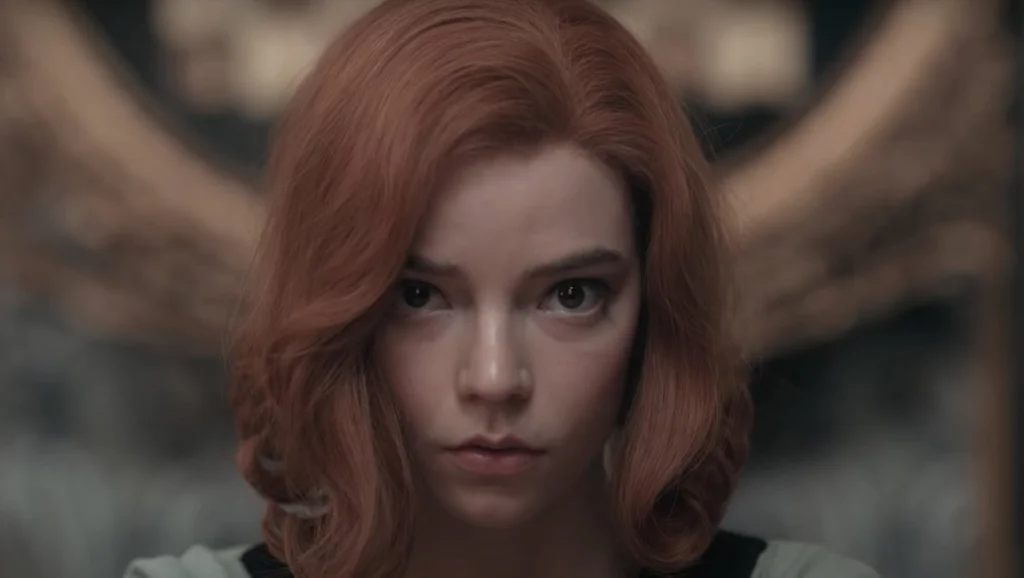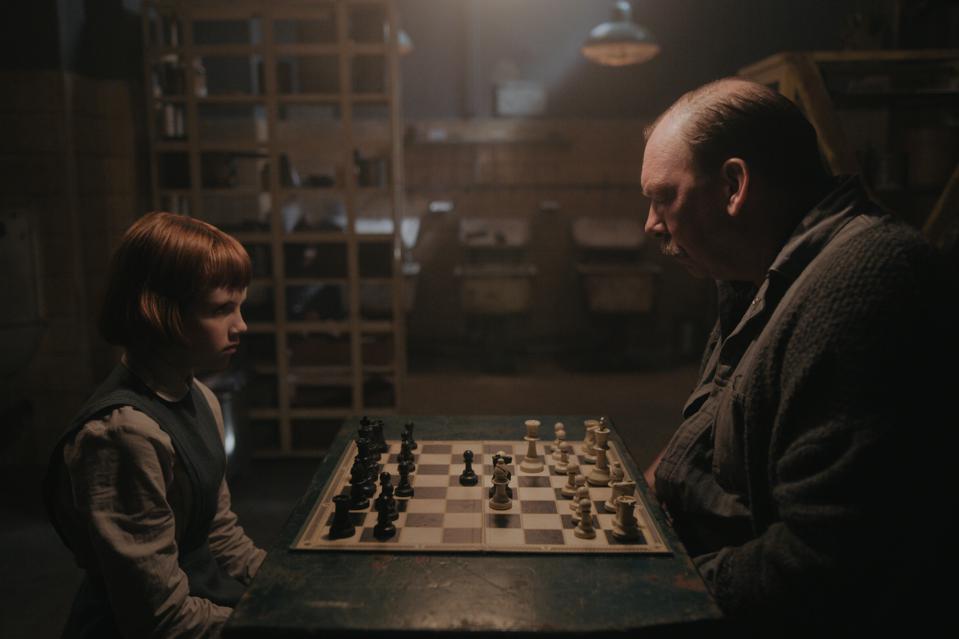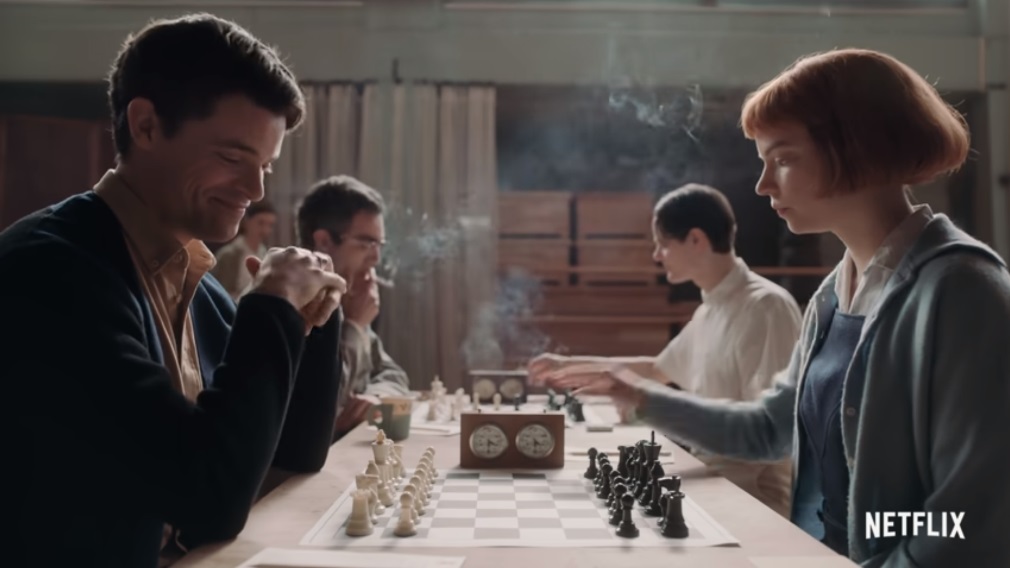Welcome to the first installment of my new series, Accidentally Autistic, in which I discuss headcanoned autistic characters — characters not formally declared autistic by the creators, but heavily coded that way, whether intentionally or unintentionally.

(Minor spoilers)
The Queen’s Gambit is a Netflix series about a fictional chess prodigy in the 1960s. The main character is Beth Harmon, an orphan who spends her nights staring at the ceiling and imagining chess pieces moving on a giant board. I was immediately struck by how autistic she seemed, and watching further episodes only strengthened that perception. When I brought it up with a group of autistic women, everyone who’d seen the show had the same reaction. Autistic vibes all around.
But what makes Beth autistic?
It’s not any one thing, but a multitude of small things. Beth is intelligent, socially awkward, and often seemingly distant. She’s reserved and you get a sense that she’s evaluating her words before speaking. When she does speak off-the-cuff, it’s obvious she’s not saying what is expected of someone her age and gender. It would be easy to chalk up her behavior to the loss of her mother, but even there, she doesn’t react in a typical way. Standing beside the car crash which had just taken her mother’s life — a crash she herself survived — Beth’s non-reaction is striking. It’s clear to any autistic watching that she’s having a shutdown, which is an internalized version of a meltdown. “Sure, anyone would be upset in that situation,” you might say. Yes, but it doesn’t stop there.

When Beth arrives at the orphanage she initially sticks to the rules, taking her pills as prescribed instead of listening to a fellow orphan and saving the green pill for later. This may be due in part to the directions themselves, which aren’t exactly clear:
Beth: What are they?
Jolene: Vitamins.
Second girl, laughing: Magic vitamins.
Jolene: If I were you, I’d save the green ones till the nighttime. Otherwise they turn off right when you need them to turn on, if you know what I mean.
Clear as mud if you’re an autistic kid, and Beth is obviously puzzled. Should she take them or not? Are the girls playing a trick on her or trying to help her? Beth is often puzzled by the actions of others. Jolene, a fellow orphan, is the one to initiate a friendship with Beth, who doesn’t show any real interest in others. Beth is happy to be alone and doesn’t really seem to fit in, especially once she starts attending a typical high school. She spends her days and nights hyperfixating on chess. It’s all she thinks about and really all she wants to talk about. As is the case for many of us, it is only through her special interest that Beth starts to make friends on her own, though the male players are initially put off by her confidence and lack of social decorum. (Side note: It is incredibly refreshing to see the interactions between Beth and the other female player. When it’s obvious that Beth has never been to a tournament, the other girl patiently answers all her bluntly-asked questions. It would have been easy to make her snide over Beth’s delivery and I’m very happy they didn’t do that.)
When Beth’s chess skills win her notoriety, the previously dismissive girls at her high school make an attempt to include Beth in their circle. Beth attends one of their gatherings. She tries her best to fit in, picking an outfit she thinks will impress the girls, a black formal dress. The other girls sit together on one big couch, in more casual, somewhat-matching outfits. Beth sits alone on a stool, posture rigid, hands clasped. They ask her about boys. Beth doesn’t understand the purpose of the question and then misses an innuendo about “trading Rooks.” When the girls turn on the television and start singing along, Beth stares at them like she just walked into a musical and flees the party.

Beth cares deeply about her adoptive mother, though she doesn’t demonstrate this emotively. Her care is shown in small gestures—cautioning her about drinking too much and joining her to watch a show. Initially I was concerned this would turn into a predatory relationship, but Mrs. Wheatley shows real affection for Beth. Once she truly understands Beth’s passion for chess, she listens to Beth infodump and watches her games to show support, even though she can’t follow all the moves. When a reporter starts asking Beth inappropriate questions, Mrs. Wheatley promptly hustles her out.
Episode five contains very striking examples of what it’s like to navigate romantic relationships as an autistic woman. An old colleague, Harry, takes an interest in Beth and offers to help her practice. He’s been following her career and has gone to great lengths to make himself more attractive, fixing his teeth, but Beth doesn’t seem to notice or send any of the usual cues of someone who’s interested. She’s not gushy or romantic. When Harry becomes discouraged decides to move on, Beth logically suggests he move in with her.
The first time Harry kisses Beth she’s momentarily stunned. He interprets this as a lack of interest. Beth quickly corrects him, clarifying that she simply wasn’t ready, but that she is now. Being mentally prepared for physical contact is totally in autistic thing, as we have a lot of sensory issues and a strong need for knowing what to expect (after a decade of marriage, my spouse has learned to verbally ask permission before initiating a hug). Post-coitus, Beth sits up and immediately starts reading. Harry tries to engage Beth in conversation, and while she does talk, her focus is on the book, leaving Harry confused and feeling dismissed. He can’t see that Beth is happy with the relationship and enjoys his company, that her reading the book means she’s comfortable enough to be herself around him. Harry’s not getting the emotional connection he wants and so he leaves.
Beth is an exceptional example of how to write autism well. It’s not the focus of her story, but you clearly see how it impacts her relationships. I doubt the writers had autism in mind when they wrote Beth, but she’s so strongly coded that autistics can identify with her.
© Val Neil All right reserved. Images belong to Netflix.
